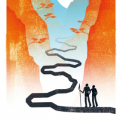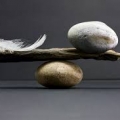The Zen Master Bukko on koans
 Jeroen
Not all those who wander are lostNetherlands Veteran
Jeroen
Not all those who wander are lostNetherlands Veteran
Bukko said:
At the beginning you have to take up a koan.
The koan is some deep saying of a patriarch. It’s effect in this world of distinctions is to make a man’s gaze straight, and to give him strength as he stands on the brink of the river bank. For the past two or three years, I have been giving, in my interviews, three koans: “the true face before father and mother were born”, “the heart, the Buddha” and “no heart, no Buddha”. For one facing the turbulence of life-and-death, these koans clear away the sandy soil of worldly concerns and open up the golden treasure which was there from the beginning, the ageless root of all things.
However, if after grappling with a koan for three or five ears, there is still no satori, then the koan should be dropped; otherwise it may become an invisible chain around one. Even these traditional methods can become a medicine which poisons.
In general, meditation has to be done with urgency, but if, after three or five years the urgency is still maintained forcibly the tension becomes a wrong one and it is a serious condition. Many lose heart and give up as a result.
An ancient has said, “sometimes quickly and sometimes slowly, sometimes hot on the trail and sometimes resting at a distance.”
Bukko continued:
So this mountain priest now makes people at this stage throw down their koan. When it is dropped and there is a cooling down, in due time they hit on what their own true nature is, as the solution to the koan.
In concentration on a koan, there is a time of rousing the spirit of inquiry, there is a time of breaking the clinging attachments, there is a time of furious dashing forwards, and there is a time of damping the fuel and stopping the boiling. Since coming to Japan, the mountain priest has been making the pupils look into a koan, but when they have done this for a good time, he tells them to throw it down. The point is that many people have come to success if they first have the experience of wrestling with a koan and later reduce the effort; but fewcome to success at the time when they are putting out exceptional effort.
So the instruction is that those who have not yet looked into a koan absolutely must do so, but those who have had one for a good time must throw it down. At the time of zazen they throw it all away. They sleep when it is time to sleep, go when it is time to go, sit when it is time to sit, and so on, as if they were not doing zen at all.
I came across this while reading Osho, and thought it was an interesting overview on koans. Osho’s commentary was interesting too, he basically said koans were a device for tiring the mind, in order to get a glimpse of the state of no-mind.


Comments
I prefer Zen Cohens ... oy vey peme hum

Here is a Zen saying I like, “If you meet Osho on the road, reverse your Rolls Royce ... preferably over hymn ...”
(too cruel?)
http://www.apologeticsindex.org/11068-rajneesh-movement
Very funny... but I know some of the people who knew Osho personally, and the movement has gotten a very raw deal in the press. I don’t know exactly why, but post-Oregon all the editorial slants turned pervasively negative, while in fact the sannyasin movement was nothing like a cult from what I’ve been able to determine.